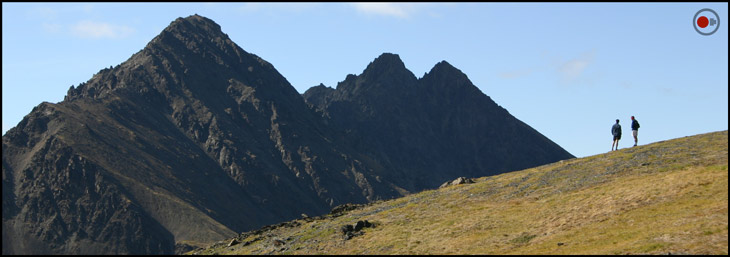How the Body Adjusts to Altitude
Living on the Edge: How Do High-Altitude Humans Do It?
When Felix Baumgartner shattered the world record for the highest skydiving jump at 127,852 feet in 2012, it was only a matter of time before it was broken again. Two years later, Alan Eustace, a top Google executive, went even further in an equally amazing (but less well-publicized) stunt: he attached himself to a helium balloon and jumped from 135,892 feet.

Neither Felix or Alan would have been able to complete these awesome, high-altitude feats without the help of a small army of engineers, technicians, and scientists – not to mention numerous technological tricks and tools. Humans cannot survive unassisted at those altitudes due to a lack of oxygen…for now.
Ever since humans first arrived on the scene, we’ve been pushing the limits of how high we can go. Felix and Alan used modern technology to do it, but in less extreme cases, we use what nature gave us to alter our own biology. As we travel to higher altitudes most people experience biological changes without even knowing it in a reversible process called acclimatization. There are also many groups of humans that have evolved permanent long-term adaptations to such altitudes.

Short-Term Altitude Acclimatization
Our bodies are streamlined oxygen-consumption machines. There are hundreds of anatomical features and physiological processes involved in making sure cells have enough oxygen when and where they need it most. When we travel to altitudes where there’s less oxygen, these features and processes are thrown out of whack slightly and need to readjust or acclimatize.
The body monitors its blood oxygen levels with special sensors called carotid bodies, which are located in the carotid artery within the neck. As we travel higher, the carotid bodies sense blood oxygen levels decreasing in real time. In order to increase blood oxygen levels, the brain kicks into high gear and sends out frenzied signals all over the body.

At higher altitudes, you’ll notice several changes happening immediately. You’ll begin to breathe faster, and you might even feel your heart beating faster in order to increase the amount of oxygen your blood can pick up in the alveoli of your lungs. One weird side effect of this is that it makes your blood more alkaline, so your kidneys attempt to balance blood pH by getting rid of excess bicarbonate ions in your urine. Unfortunately, this means you’ll need to pee more as well.
Even with all of these changes, it’s easy to become exhausted and out of breath while even moderately exercising, as I discovered recently after having to haul all of my furniture into a second-floor apartment after moving from Fairbanks, AK (436 feet above sea level) to Fort Collins, Colorado (5,003 feet above sea level). These changes are only short-term solutions, so our bodies will begin to look for longer-term solutions.
If you remain at a higher altitude, over the course of the next few days and weeks, your body actually begins to restructure itself on a microscopic level in order to make things easier for you long term. Your kidneys begin producing a hormone called erythropoietin, which stimulates stem cells in your bone marrow to produce more and larger red blood cells. You begin growing more capillaries throughout your body to deliver more blood, and hence more oxygen, to your tissues.
Long Term Altitude Acclimatization
The Highlanders: Pushing Long-Term Adaptations to the Extreme
Almost anyone can acclimatize to higher altitudes. There are some groups of humans, however, who have lived in high-altitude areas for so long that they’ve actually evolved unique physiological and anatomical adaptations that help them live successfully at the edge of high-altitude human limits.
Although the movie Highlander proclaims that “there can be only one,” the truth is that there are many different groups of highlander people throughout the world. Groups of native people have inhabited the Tibetan, Andean, and Ethiopian highlands at altitudes of up to 16,732 feet for thousands of years. In that time, they’ve evolved some neat tricks to help them cope in ways that lowlanders cannot – such as changes to their hemoglobin to make it more efficient at pulling oxygen out of thin air, or structural changes in the lungs to give them greater volume.
The Altitude Limit
Although humans have likely been living at high altitudes for as long as we’ve been a species, there is still an upper limit to even the most extreme of us. Most mountaineering experts refer to altitudes above 26,000 feet as the “death zone” – where humans cannot survive long-term without supplemental oxygen.
As humans continue to live in high-altitude places, it’s likely we’ll continue to develop new mechanisms and adaptations to cope with low oxygen levels. Who knows how high we’ll be able to go up unassisted some day
Learn more: Untamed Science Video
In this short Untamed Science video, Rob travels to the home of the olympic training facility in Colorado Springs, CO to try and understand why athletes train at altitude.
Related Topics
Living on the Edge: How Do High-Altitude Humans Do It?
When Felix Baumgartner shattered the world record for the highest skydiving jump at 127,852 feet in 2012, it was only a matter of time before it was broken again. Two years later, Alan Eustace, a top Google executive, went even further in an equally amazing (but less well-publicized) stunt: he attached himself to a helium balloon and jumped from 135,892 feet.

Neither Felix or Alan would have been able to complete these awesome, high-altitude feats without the help of a small army of engineers, technicians, and scientists – not to mention numerous technological tricks and tools. Humans cannot survive unassisted at those altitudes due to a lack of oxygen…for now.
Ever since humans first arrived on the scene, we’ve been pushing the limits of how high we can go. Felix and Alan used modern technology to do it, but in less extreme cases, we use what nature gave us to alter our own biology. As we travel to higher altitudes most people experience biological changes without even knowing it in a reversible process called acclimatization. There are also many groups of humans that have evolved permanent long-term adaptations to such altitudes.

Short-Term Altitude Acclimatization
Our bodies are streamlined oxygen-consumption machines. There are hundreds of anatomical features and physiological processes involved in making sure cells have enough oxygen when and where they need it most. When we travel to altitudes where there’s less oxygen, these features and processes are thrown out of whack slightly and need to readjust or acclimatize.
The body monitors its blood oxygen levels with special sensors called carotid bodies, which are located in the carotid artery within the neck. As we travel higher, the carotid bodies sense blood oxygen levels decreasing in real time. In order to increase blood oxygen levels, the brain kicks into high gear and sends out frenzied signals all over the body.

At higher altitudes, you’ll notice several changes happening immediately. You’ll begin to breathe faster, and you might even feel your heart beating faster in order to increase the amount of oxygen your blood can pick up in the alveoli of your lungs. One weird side effect of this is that it makes your blood more alkaline, so your kidneys attempt to balance blood pH by getting rid of excess bicarbonate ions in your urine. Unfortunately, this means you’ll need to pee more as well.
Even with all of these changes, it’s easy to become exhausted and out of breath while even moderately exercising, as I discovered recently after having to haul all of my furniture into a second-floor apartment after moving from Fairbanks, AK (436 feet above sea level) to Fort Collins, Colorado (5,003 feet above sea level). These changes are only short-term solutions, so our bodies will begin to look for longer-term solutions.
If you remain at a higher altitude, over the course of the next few days and weeks, your body actually begins to restructure itself on a microscopic level in order to make things easier for you long term. Your kidneys begin producing a hormone called erythropoietin, which stimulates stem cells in your bone marrow to produce more and larger red blood cells. You begin growing more capillaries throughout your body to deliver more blood, and hence more oxygen, to your tissues.
Long Term Altitude Acclimatization
The Highlanders: Pushing Long-Term Adaptations to the Extreme
Almost anyone can acclimatize to higher altitudes. There are some groups of humans, however, who have lived in high-altitude areas for so long that they’ve actually evolved unique physiological and anatomical adaptations that help them live successfully at the edge of high-altitude human limits.
Although the movie Highlander proclaims that “there can be only one,” the truth is that there are many different groups of highlander people throughout the world. Groups of native people have inhabited the Tibetan, Andean, and Ethiopian highlands at altitudes of up to 16,732 feet for thousands of years. In that time, they’ve evolved some neat tricks to help them cope in ways that lowlanders cannot – such as changes to their hemoglobin to make it more efficient at pulling oxygen out of thin air, or structural changes in the lungs to give them greater volume.
The Altitude Limit
Although humans have likely been living at high altitudes for as long as we’ve been a species, there is still an upper limit to even the most extreme of us. Most mountaineering experts refer to altitudes above 26,000 feet as the “death zone” – where humans cannot survive long-term without supplemental oxygen.
As humans continue to live in high-altitude places, it’s likely we’ll continue to develop new mechanisms and adaptations to cope with low oxygen levels. Who knows how high we’ll be able to go up unassisted some day
Learn more: Untamed Science Video
In this short Untamed Science video, Rob travels to the home of the olympic training facility in Colorado Springs, CO to try and understand why athletes train at altitude.
































































































